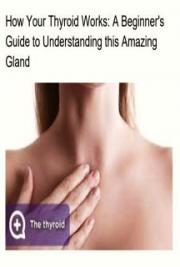Disclaimer
This book is written by Jamie Kochan.
I am not a Physician and the information found in the book is based on my research. The content found in the book is for information purposes only. The book is FREE and you are able to provide it to others whom you feel might benefit from it.
In order to let others know of this eBook – please direct them to the website below.
http://www.EaseMigrainePain.com
Table of Contents:
The Criteria of A Migraine……………………..…………………………………………………………………………………………PG 5
Migraine Myths ……………….…………………..…………………………………………………………………………………………PG 6
The High Price of Migraines ………………….…………………………………………………………………………………………PG 7
The Different Stages of Migraines ……………………………………………………………………………………………………PG 8
Abdominal Migraines…………………………….…………………………………………………………………………………………PG 8
Aging and Migraines…………………………………………………………………………………………………………………………PG 9
Basilar Migraines………………………………………………………………………………………………………………………………PG 10
Hemiplegic Migraines…………………………….…………………………………………………………………………………………PG 11
Paediatric Migraines..…………………………….…………………………………………………………………………………………PG 12
Transformed Migraines………………………….…………………………………………………………………………………………PG 12
Aromatherapy and Migraines....…………….…………………………………………………………………………………………PG 13
Applying Heat or Cold For Migraine Relief..………………………………………………………………………………………PG 14
Acupressure and Migraines..………………….…………………………………………………………………………………………PG 15
Acupuncture for Migraines..………………….…………………………………………………………………………………………PG 16
Butterbur for Migraines.……………………….…………………………………………………………………………………………PG 16
Balancing Chakras To Soothe Migraines..…………………………………………………………………………………………PG 17
Chiropractic Care for Migraines…………….…………………………………………………………………………………………PG 18
Cognitive Behavioural Therapy for Migraines..…………………………………………………………………………………PG 19
Exercise to Ease Migraines…………………….…………………………………………………………………………………………PG 20
Home for Migraines and Headaches.…….…………………………………………………………………………………………PG 21
Hypnotic Migraine Relief……………………….…………………………………………………………………………………………PG 22
Migraines and Re-bound Headaches…….…………………………………………………………………………………………PG 22
Migraines and PMS……………………………….…………………………………………………………………………………………PG 23
Migraines and Obesity………………………….…………………………………………………………………………………………PG 24 Migraines and Insomnia……………………….…………………………………………………………………………………………PG 25
Migraines and Depression…………………….…………………………………………………………………………………………PG 26
Migraines and Caffeine..……………………….…………………………………………………………………………………………PG 26
Neurostimulator Implants and Migraines…………………………………………………………………………………………PG 27
Smoking and Migraines………………………….…………………………………………………………………………………………PG 28
Genetic Research Into Migraines.………….…………………………………………………………………………………………PG 29
Common Migraine Food Triggers.………….…………………………………………………………………………………………PG 29
Migraine Auras.………...………………………….…………………………………………………………………………………………PG 30
Poison the Pain – Botox for Migraines.….…………………………………………………………………………………………PG 31
Fewer Migraines with Feverfew…………….………………………………………………………………………………………..PG 32
Migraine Prodromes…………………………….………………………………………………………………………………………….PG 32
Thermal Bio-Feedback and Migraines..….…………………………………………………………………………………………PG 33
Yoga for Migraines……..………………………….…………………………………………………………………………………………PG 34
Using Whitenoise to Treat Migraine Symptoms……….………………………………………………………………………PG 35
Running into Migraines………………………….…………………………………………………………………………………………PG 36
Non-Drug Treatment for Paediatric Migraines.…………………………………………………………………………………PG 36
Riboflavin for Migraines…..…………………….…………………………………………………………………………………………PG 37
Reflexology for Migraines..…………………….…………………………………………………………………………………………PG 38
Migraine Trigger Elimination Dieting….….…………………………………………………………………………………………PG 39
Lifestyle Change for Natural Migraine Prevention.……………………………………………………………………………PG 39
Prophylactic Migraine Medications……….…………………………………………………………………………………………PG 40
Migraine Abortive Medications…………….…………………………………………………………………………………………PG 41
Find a Migraine Doctor………………………….…………………………………………………………………………………………PG 42
Toradol-When Migraine Pain Won’t Stop…………………………………………………………………………………………PG 43
Are You In or Out……….………………………….…………………………………………………………………………………………PG 44 Online Resources for Migraineurs………….…………………………………………………………………………………………PG 44
Conclusion………………….………………………….…………………………………………………………………………………………PG 46 Migraine Criteria
The Classification Subcommittee of the International Headache Society (IHS) publishes and revises the “International Classification of Headache Disorders”, now in its second edition. This book offers specific diagnostic criteria for diagnosing migraines and is currently used worldwide.
According to IHS, a common migraine headache, also known as a migraine without aura, is defined by the specific criteria found below.
Frequency
The patient must have at least five of these headaches.
Duration
The headache, excluding attendant symptoms or prodromes, must last a minimum of four hours, up to seventy-two hours. Headaches that last over seventy-two hours generally require immediate medical attention in order to rule out other, more dangerous conditions.
Pain Descriptors
In order to be classed as a migraine a headache must include at least two of four different qualities of pain:
1) The pain is one-sided; the headache is primarily on one side of the head.
2) The pain is not constant; it throbs, pounds, or pulsates.
3) The pain must be of moderate or severe intensity, to the point where the sufferer is inhibited in daily activity, potentially to the point of being temporarily disabled.
4) The pain is increased, sometimes only slightly, by routine physical activity like bending over, climbing stairs, or moving quickly.
Side Effects
Headache pain must be accompanied at least one of four common side effects:
1) Nausea
2) Vomiting
3) Photophobia – sensitivity to light
4) Phonophobia – sensitivity to sound Secondary Exclusions
Appropriate medical testing, such as a MRI or CAT scan, and/or a physician’s exam must be conducted to rule out other conditions that may have caused the headache.
These criteria have helped simplify the diagnosis of migraine for many. However, because migraines are historically associated with extremely high levels of pain, people suffering from moderate migraine may not realize that is what they are experiencing.
Migraine Myths
There are a number of commonly held beliefs about migraines that make it hard for sufferers to get proper diagnosis and treatment.
1) Migraines are not real (all in the head, an overreaction to a normal headache, etc.).
Not true. Migraines are a biologic primary headache disorder. Even migraine pain is not confined to the head, though that is generally where it is worst.
2) Migraines have a known cause.
Sadly, no. There have been several interesting theories put forward in the last decade, but no single, definitive biological cause of migraines has been identified thus far.
3) All migraineurs have the same symptoms.
No, they don’t. This is one of the things that makes migraines so hard to diagnose, particularly if a patient’s doctor is only familiar with the most common symptoms.
4) A doctor can tell if it’s a migraine or not.
Not always. The wide spectrum of symptoms that can accompany migraine can make it difficult to diagnose, more so if the patient is not forthcoming with their doctor about all their symptoms.
5) Migraines are curable.
Again, no. Once properly diagnosed many migraineurs still have to devote a lot of time and energy to managing their condition through medications, natural and homeopathic remedies, and diet and lifestyle changes. The various available coping methods work differently for each individual, so there is not even a single protocol of care.
6) Migraines are a woman’s headache.
Women migraineurs do outnumber the men 3 to 1, but there is no evidence the condition is sex-linked in any way.
7) Only adults get migraines.
Migraines have been diagnosed in adolescents, children, and even infants.
8) Every headache a migraineur is a migraine
Not true. Migraine sufferers can have regular sinus, tension, or stress headaches just like anyone else.
The High Price of Migraines
Migraines are expensive. Recent studies show that the chronic, debilitating headaches have a high cost not just for the sufferer, but for their family, and, surprisingly, their employer as well.
Migraineurs (people who suffer from migraine headaches) pay an enormous quality of life cost. Their wallets suffer as well. Health care costs for families with a migraine sufferer are, on average, seventy percent higher than those of families without a migraineur. Migraine sufferers also pay for their pain in lost income. Sometime this is due to unpaid time away from work. Sadly, at other times it is because raises and promotions are not made available to them because they are deemed unreliable due to their condition.
The costs to employers are high, too. In the United States, it is estimated that migraines cost employers over twenty-four billion dollars each year. Half of that amount is indirect costs, things like absenteeism, short-term disability, and worker’s compensation. It is estimated that these costs would be even higher if “presenteeism” were included. Presenteeism is the estimated cost of lost productivity that employees with migraines experience while on the job.
Of the estimated twelve point seven billion dollars migraines cost employers directly each year, the number one expense contributor is outpatient care. Outpatient care for migraines costs employers an estimated $6.2 billion annually. It is followed closely by prescription drug costs at $5.2 billion per year, and the remaining percentage is split between inpatient care and emergency costs.
This is not just a U.S. problem. In the United Kingdom, an estimated twenty-five million working or school days are lost annually due to migraines. Costs of absenteeism and lost productivity have gotten so high that employers are being asked to encourage migraineur employees to seek treatment as a costsaving measure.
Migraine Stages
Migraines develop in four stages. Patients with migraines with aura, also known as classic migraines, are most likely to experience all four stages. Patients who have common migraines, migraines without aura, will have the same stages, but are not consciously aware of them. The interval between migraines is sometimes referred to as the fifth stage of a migraine.
Stage One – Prodrome
The prodromal phase usually begins one or two days prior to the actual migraine headache. Many migraineurs call this the “premonition” phase. Feelings during this phase are all over the map. Each migraineur has their own personal prodrome profile. Some are giddy, happy, and full of energy, far more so than usual. Others feel a headache start with fatigue, weakness, and irritability. Anything can herald a migraine and each person has to learn their own prodrome signs if they want to learn to stave off the migraine.
Stage Two – Aura
This phase is skipped by most migraineurs, since most migraineurs suffer from common migraine, migraine without aura. For those who experience classic migraine with aura, auras can begin anywhere from five minutes to an hour before the headache begins. Auras are visual effects migraineurs experience. Objects appear to have bright auras or haloes around them. Lightning flashes arc over the field of vision until sight is whited out just before the pain begins.
Stage Three - Headache
This phase lasts anywhere from four to seventy-two hours. Most common is a one-sided headache with a throbbing or pulsing characteristic. The headache is frequently accompanied by stomach upset, nausea, vomiting, and sensitivity to light, sound, smell, or some combination of the three.
Stage Four – Postdrome
Coming away from a migraine can be as unpleasant as building up to one. Postdrome is often characterized by tenderness of the head, neck, and stomach. Weakness and fatigue are also common in this phase.
Abdominal Migraines
Anyone who has ever had a migraine will say they do not just happen in the head. The headache is usually the worst and most painful part of a migraine, but there’s more. Most migraineurs (people who suffer from migraines) will talk about photosensitivity (sensitivity to light), phonosensitivity (sensitivity to sound), scent sensitivity, gastric pain, cramping, and vomiting.
Sometimes the abdominal symptoms show up without the other typical migraine symptoms. When they do, a patient is said to be experiencing an abdominal migraine. An abdominal migraine is pain, usually varying from mild to medium, in the abdomen. The pain is either along the midline or unspecified and is frequently accompanied by abdominal tenderness, cramp-like spasms, bloating, vomiting, and loss of appetite.
Since abdomen pain can be caused by a wide variety of conditions other causes need to be ruled out before a diagnosis can be made. In a classic abdominal migraine, no gastric cause for the pain can be identified. Migraineurs need to let their doctors know about their migraines when they experience unspecified abdominal pain so that the doctor knows abdominal migraine may be a possibility.
Abdominal migraines are most common in children. Children who experience abdominal migraines frequently grow up to be migraineurs. While abdominal migraine is not unheard of in adults, it is rare. Like most other types of migraine, it is also more common in females than in males.
While the exact cause of abdominal migraines is unknown, it is highly likely to be related to serotonin deficiency. Serotonin deficiency has been linked in several studies to migraines, and 90% of the body’s serotonin is produced in the gastric system. Serotonin deficiency causes cascading waves of nerve reaction in the brain when triggering a migraine and a similar process may be in effect in the abdomen.
Aging and Migraines
Aging is a fact of life. Getting older means increasing frailty and susceptibility to illness, but it can also be a boon to migraineurs (people who experience migraine headaches). Only 2-10% of the elderly population experiences migraines (as opposed to up to 28% of adults under 65), and elderly women are still more likely to have them than their male counterparts.
Migraines can happen at any age, but they peak around age 40. The frequency of migraine attacks after 40 decreases for most people. Many migraineurs who have suffered with this condition for years experience a reduction in the frequency and severity of attacks after age 55.
About two thirds of migraineurs stop having attacks altogether by age 65. Patients over 65 who still have migraines report drastically decreased severity, duration, and frequency in their attacks. They are also less likely to experience the gastrointestinal upset that accompanies migraine in younger people.
The downside to all this good news is that adults over 65 who suffer from migraines are more likely than younger patients to experience disability because of their affliction. Many physicians are uncomfortable with treating senior citizens for migraines because therapeutic methods used on younger people are often not tested for safety in an older patient.
Additional conditions and the medications used to treat them complicate the problem. Seniors are more likely to be on one or more prescription drugs and each new medication increases the risk of adverse drug reactions. This possibility makes some doctors reluctant to offer senior migraineurs pharmaceutical assistance.
The onset of migraines after age 50 is very rare and should be investigated with a doctor to rule out the possibility of secondary causes. Late onset does not rule out migraine (only one third of senior headaches are due to secondary conditions) but it makes it less likely.
Basilar Migraines
Migraines can be more than just a pain in the head. Basilar migraines, once known as basilar artery migraines or BAMs, are an extraordinarily rare but potentially life-threatening variant of the classic migraine with aura.
Basilar migraine symptoms are caused by constriction of the basilar artery, which supplies blood to the brain stem. BAMs were originally thought to affect only young women and adolescent girls, but research shows that while they are primarily a problem for these groups they can occur in people of all ages and genders.
During the aura phase, basilar migraine symptoms may include loss of balance, double vision or partial vision loss, lack of coordination, numbness on one or both sides of the body, weakness, dizziness or confusion and severe vomiting. The symptoms typically last an hour or less and disappear when the headache begins, but may last as long as days after the headache pain has disappeared. Some basilar migraine sufferers pass out or lose consciousness during the aura phase as well. In extremely rare cases, they may even slip into a coma that can last hours or days.
The danger of basilar migraines is that they can lead to a transient ischemic attack (TIA) or stroke. A transient ischemic attack is essentially a miniature stroke resulting from a temporary interruption of the flow of blood to the brain. Unlike strokes, TIAs have not been shown to cause permanent damage to the brain and most neurological problems that arise from them, like slurred speech or weakness on one side, clear up within twenty-four hours of the attack.
The basilar artery is located at the back of head. The headache associated with basilar migraines is usually a severe throbbing ache on both sides of the back of the head, as opposed to the unilateral temple throbbing more commonly associated with migraines.
Hemiplegic Migraine
There are a number of different types of migraine headaches, including both the classic and common migraine. One particularly rare type of migraine is the hemiplegic migraine.
Hemiplegic migraines are migraine headaches with very particular symptoms. They include:
* A sudden attack unilateral (one-sided) weakness and/or paralysis, typically during the aura phase of migraine.
* The weakness frequently involves a migraineur's face, arm, and leg.
* When the right side of the body is the affected side, the migraineur may be speech impaired.
* A mild head trauma can trigger a hemiplegic migraine.
* A migraine headache follows the paralysis.
* The paralysis lasts from an hour to days, but usually clears up within 24 hours.
* Dizziness, vertigo, double vision, and difficulty in walking or balancing may all be part of a hemiplegic migraine.
Hemiplegic migraines are predominantly genetic and sufferers usually have at least one first or seconddegree relative (parent, sibling, aunt, uncle, first cousin) who also suffers from hemiplegic migraines.
Since many hemiplegic migraines are brought on by minor head trauma, people with a propensity for this type of migraine are encouraged to avoid contact sports. In families where the condition is common, onset frequently occurs in childhood, so the no-contact rule is particularly important for children in hemiplegic prone families.
Several genetic markers have been identified for hemiplegic migraine specifically. It is not a condition that screening is normally offered for, but screening is available for it upon request.
This type of migraine is particularly disturbing because its symptoms so closely resemble a stroke. Fortunately, the stroke-like effects usually reverse completely within 24 hours. They are also problematic because hemiplegic migraines do not respond to most migraine medications and often have to be treated more like epilepsy with more dangerous medications than regular migraineurs take. Pediatric Migraines
Children get migraines, too, they are not a condition confined to adulthood.. Studies have even indicated that infants may get migraines, but this is hard to verify.
Current estimates indicate that up to 10% of children between 5-15 years old suffer from migraines, increasing to 28% in the 15-19 age range. Migraine headaches have a real impact on quality of life for children. The high percentage of children that experience migraines makes them a top childhood health problems.
Diagnosing pediatric migraine is similar to diagnosing adult migraines with a few notable exceptions. The International Headache Society’s criteria states that the headache must last 4 to 72 hours. Children’s migraines are generally shorter and this fact needs to be taken into account when attempting to diagnose them. Adult migraines are frequently one-sided, but children’s frequently involve pain on both sides of the head. These headaches should not be dismissed just because they are not one-sided.
For most child migraineurs (people suffering from migrainous headaches) the headaches begin between 5 and 11 years of age. Prior to puberty, the number of male and female children with migraines is roughly equal. After puberty, girls are considerably more likely than boys are to have migraines, most likely due to the same hormonal issues that make the number of adult women migraineurs three times that of the men.
Many child migraineurs are fortunate enough to have their condition disappear during puberty or upon reaching adulthood. However, people who have migraines as children are much more likely to become adult migraineurs than those who did not have them as a child.
Adult migraine sufferers should watch for migraine symptoms in their children, particular if the other parent also experiences migraines. A child with







